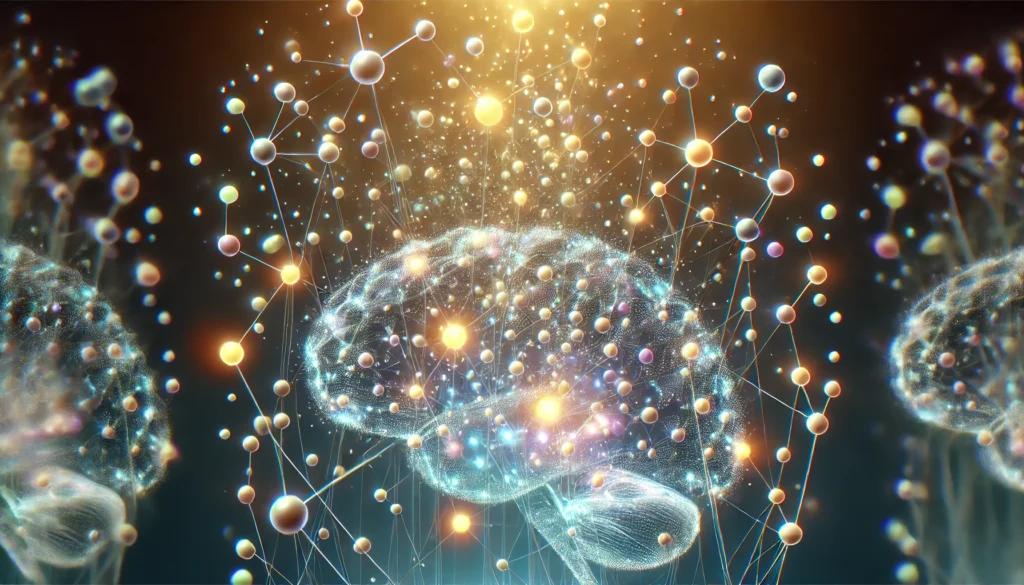Sleep is an essential pillar of human health, influencing everything from cognitive performance to physical recovery. Among the mechanisms that regulate our sleep patterns, sleep-wake homeostasis plays a critical role. This system ensures that we balance our need for sleep with our waking activities, using a process often referred to as the “homeostatic sleep drive.” This natural drive, coupled with “sleep pressure,” governs when we feel sleepy and when we feel alert. By understanding how sleep-wake homeostasis works, we can harness its benefits for optimal focus and recovery.
In this article, we will explore the intricate relationship between homeostasis and sleep, delving into the biology of the homeostatic drive and its impact on overall health. We will discuss how factors like sleep deprivation, circadian rhythms, and modern lifestyles affect this balance and provide actionable insights for enhancing sleep hygiene to improve mental clarity, productivity, and physical well-being.
You May Also Like: Why Do We Sleep? Exploring the Importance of Rest for Optimal Focus and Performance
The Fundamentals of Sleep-Wake Homeostasis
Sleep-wake homeostasis is a regulatory mechanism that maintains a balance between sleep and wakefulness. This balance is primarily driven by the accumulation of a substance called adenosine in the brain. As we remain awake, adenosine levels increase, creating a sensation known as sleep pressure. This pressure builds throughout the day and peaks at bedtime, prompting the body to seek restorative sleep. During sleep, adenosine levels decrease, resetting the system for the next day.
This process is distinct from, yet complementary to, the circadian rhythm—the body’s internal clock that operates on a roughly 24-hour cycle. While the circadian rhythm influences the timing of sleep based on environmental cues like light and darkness, the homeostatic sleep drive ensures that the body gets sufficient restorative sleep to meet its physiological and cognitive needs.
The Role of Adenosine in Sleep Pressure
Adenosine is a byproduct of cellular metabolism, particularly the breakdown of adenosine triphosphate (ATP), the energy currency of the body. During waking hours, adenosine accumulates in the extracellular space of the brain, binding to adenosine receptors and creating the sensation of drowsiness. This buildup forms the basis of the homeostatic sleep drive.
Interestingly, the effects of adenosine can be temporarily counteracted by substances like caffeine. As a competitive antagonist, caffeine blocks adenosine receptors, delaying the onset of sleep pressure and promoting wakefulness. However, this interference is temporary, and once caffeine’s effects wear off, sleep pressure may return with increased intensity.
The Interplay Between Sleep-Wake Homeostasis and Circadian Rhythms
While sleep-wake homeostasis ensures the body’s need for sleep is met, the circadian rhythm helps align sleep patterns with the day-night cycle. Together, these systems regulate the sleep-wake cycle, creating an intricate interplay that dictates periods of alertness and fatigue.
For example, even when sleep pressure is high, the circadian rhythm’s arousal signals can override the urge to sleep during the late afternoon, leading to a phenomenon known as the “post-lunch dip.” Conversely, during periods of low circadian arousal, such as the early morning hours, even moderate sleep pressure can induce profound drowsiness.
Sleep Deprivation and Its Impact on Sleep-Wake Homeostasis
Sleep deprivation disrupts the balance of sleep-wake homeostasis, leading to a cascade of negative consequences. When sleep pressure remains unrelieved due to insufficient sleep, adenosine levels remain elevated, resulting in cognitive impairment, mood disturbances, and physical fatigue. Chronic sleep deprivation can exacerbate these effects, increasing the risk of serious health conditions such as cardiovascular disease, diabetes, and mental health disorders.
Research has shown that partial sleep deprivation—consistently getting less than the recommended 7-9 hours of sleep—can significantly impair cognitive functions like attention, memory, and decision-making. The prolonged buildup of sleep pressure also affects emotional regulation, contributing to heightened stress, irritability, and anxiety.

The Benefits of Prioritizing Sleep-Wake Homeostasis
Maintaining a healthy sleep-wake balance has profound benefits for physical and mental health. By respecting the body’s natural homeostatic drive, individuals can:
- Enhance Cognitive Performance: Adequate sleep promotes neuroplasticity, the brain’s ability to adapt and learn. It also consolidates memories and improves problem-solving skills.
- Improve Emotional Resilience: Quality sleep helps regulate the stress response, reducing the risk of anxiety and depression.
- Boost Physical Recovery: Sleep is critical for muscle repair, immune function, and overall physical rejuvenation.
- Support Long-Term Health: Consistent, restorative sleep lowers the risk of chronic illnesses and supports healthy aging.
Strategies for Optimizing Sleep-Wake Homeostasis
1. Establishing a Consistent Sleep Schedule
A regular sleep schedule aligns the homeostatic drive with the circadian rhythm, ensuring the body receives adequate rest. Going to bed and waking up at the same time every day, even on weekends, reinforces this alignment and strengthens the sleep-wake cycle.
2. Limiting Caffeine and Stimulants
While caffeine can temporarily mask the effects of sleep pressure, excessive consumption can disrupt the homeostatic drive. Limiting caffeine intake, particularly in the afternoon and evening, helps maintain the natural buildup of adenosine and supports healthy sleep patterns.
3. Creating an Optimal Sleep Environment
A cool, dark, and quiet bedroom promotes restful sleep by minimizing environmental disruptions. Investing in blackout curtains, white noise machines, and comfortable bedding can enhance the quality of sleep and facilitate the dissipation of sleep pressure.
4. Incorporating Relaxation Techniques
Relaxation practices like meditation, deep breathing, and progressive muscle relaxation can ease the transition to sleep by calming the nervous system and reducing pre-sleep arousal.
5. Balancing Activity and Rest
Engaging in regular physical activity during the day enhances sleep quality by increasing sleep pressure. However, vigorous exercise close to bedtime may have the opposite effect, delaying sleep onset.
The Role of Naps in Managing Sleep Pressure
Short naps (10-30 minutes) can temporarily alleviate sleep pressure without disrupting nighttime sleep. These “power naps” provide a boost in alertness and cognitive function, making them a valuable tool for managing daytime fatigue. However, longer naps or those taken late in the day can interfere with the homeostatic drive, delaying the onset of nighttime sleep.
Understanding Individual Variations in Sleep-Wake Homeostasis
The optimal balance of sleep-wake homeostasis varies among individuals, influenced by factors such as age, genetics, and lifestyle. For instance, children and adolescents require more sleep due to their developing brains and bodies, while older adults may experience changes in sleep architecture and reduced sleep efficiency.
Additionally, genetic variations in adenosine receptor sensitivity and circadian genes can affect an individual’s propensity for morningness or eveningness (“lark” versus “owls”). Understanding these individual differences can guide personalized approaches to sleep optimization.
Modern Challenges to Sleep-Wake Homeostasis
In today’s fast-paced world, numerous factors disrupt the natural balance of sleep-wake homeostasis. These include:
- Exposure to Artificial Light: Prolonged exposure to screens and artificial lighting suppresses melatonin production, delaying sleep onset and disrupting the circadian rhythm.
- Irregular Work Schedules: Shift work and long hours can misalign the homeostatic drive with circadian signals, leading to sleep disturbances and chronic fatigue.
- Stress and Anxiety: Elevated stress levels activate the hypothalamic-pituitary-adrenal (HPA) axis, increasing arousal and hindering the buildup of sleep pressure.
Leveraging Technology for Better Sleep-Wake Regulation
Wearable devices and sleep-tracking apps offer valuable insights into sleep patterns and homeostatic balance. By monitoring metrics like sleep duration, efficiency, and latency, individuals can identify areas for improvement and implement targeted strategies to optimize their rest.
Future Directions in Sleep Research
Emerging research continues to uncover the complexities of sleep-wake homeostasis, offering new avenues for improving sleep health. Advances in neuroimaging, genetic studies, and wearable technology hold promise for personalized interventions that cater to individual sleep needs and lifestyles.

Conclusion: Embracing the Power of Sleep-Wake Homeostasis
Understanding sleep-wake homeostasis and its role in regulating sleep pressure is crucial for achieving optimal focus and recovery. By respecting the body’s natural rhythms and implementing strategies to support the homeostatic drive, individuals can enhance their cognitive performance, emotional well-being, and physical health.
Prioritizing sleep is not merely a matter of rest but a foundational practice for peak productivity and vitality. As research continues to illuminate the intricacies of homeostasis and sleep, embracing these principles will empower us to thrive in an increasingly demanding world.
Further Reading:
NeuroLaunch: Two Process Model of Sleep: Unraveling the Mechanics of Our Nightly Rest
Sleep: Clock Genes and Sleep Homeostasis: A Fundamental Link Within the Two-Process Model?
PLOS Biology: Why We Sleep: The Temporal Organization of Recovery
MDPI: Sleep-Wake Regulation and Its Impact on Working Memory Performance: The Role of Adenosine
Springer Open: The neurophysiologic basis of the human sleep–wake cycle and the physiopathology of the circadian clock: a narrative review
Important Note: The information contained in this article is for general informational purposes only, and should not be construed as health or medical advice, nor is it intended to diagnose, prevent, treat, or cure any disease or health condition. Before embarking on any diet, fitness regimen, or program of nutritional supplementation, it is advisable to consult your healthcare professional in order to determine its safety and probable efficacy in terms of your individual state of health.
Regarding Nutritional Supplements Or Other Non-Prescription Health Products: If any nutritional supplements or other non-prescription health products are mentioned in the foregoing article, any claims or statements made about them have not been evaluated by the U.S. Food and Drug Administration, and such nutritional supplements or other health products are not intended to diagnose, treat, cure, or prevent any disease.


